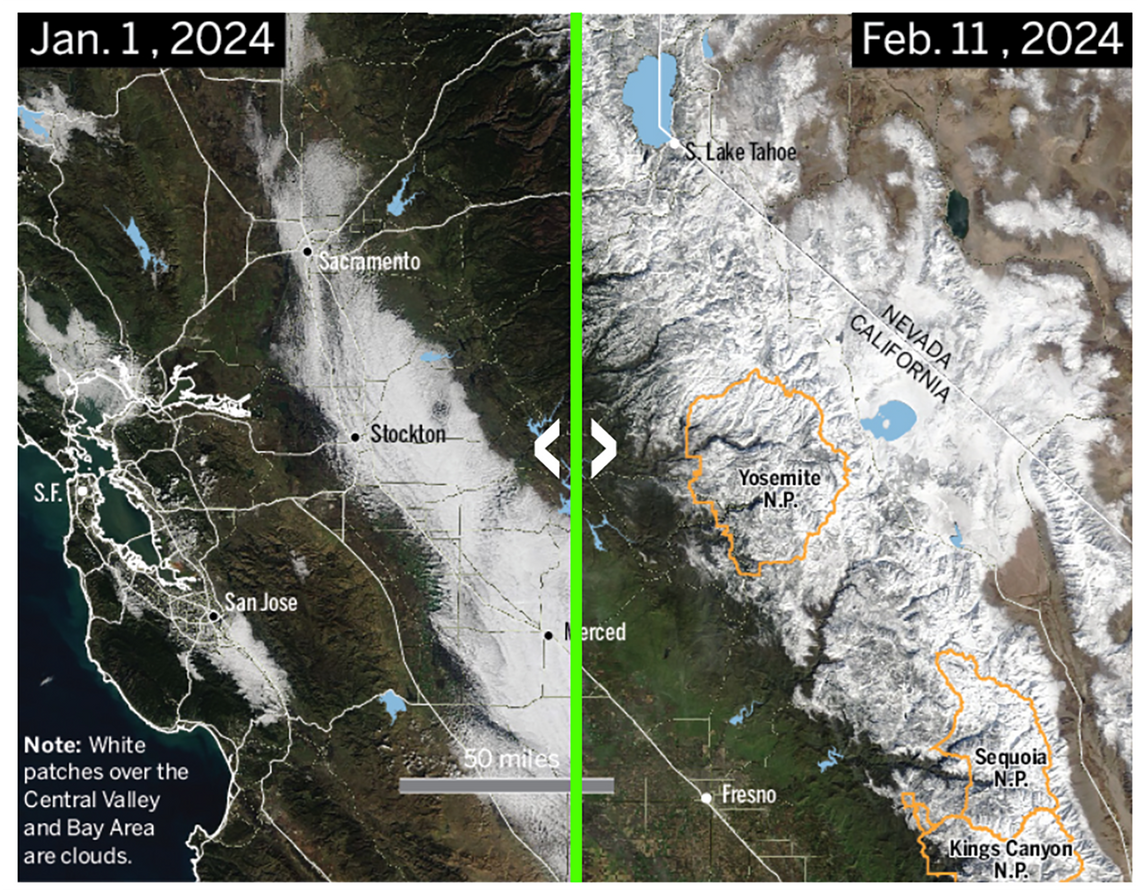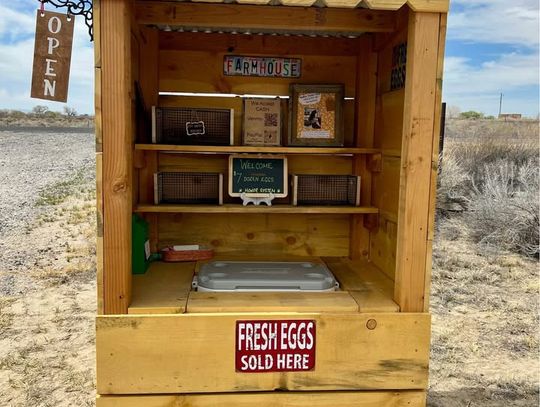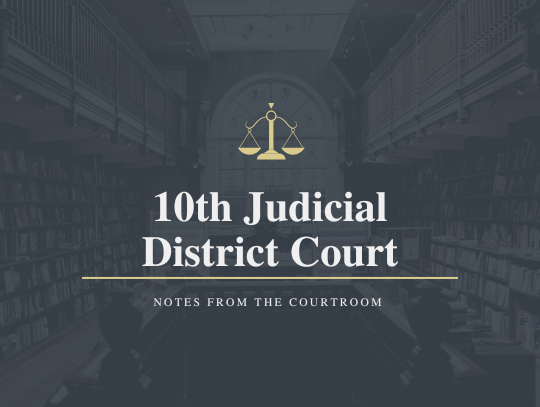In the recent Truckee Carson Irrigation District (TCID) board meeting held on March 12, 2024, board members discussed water management and projections for the upcoming irrigation season.
Dan Lahde with the Bureau of Reclamation Lahontan Basin Area Office presented an in-depth analysis of historical snow data alongside projections for the current year. He reported that snow levels in the Sierra are above average, largely thanks to large-scale storms hitting the Sierra after the new year.
Snow levels rose dramatically after the epic snowstorm in February, which increased snow levels from 31 inches on January 1 to 167 inches by February 11, according to the UC Central Snow Lab at Donner Summit. That same storm delivered similar amounts of snow south along the Sierra, a portion of which will melt directly into the Carson River and feed into the Lahontan Reservoir.
According to Lahde, prior to February 1, the Sierra snowpack was estimated well below average. “Prior to February 1, the Carson River was at 50% of median, and the Truckee was at 49%,” said Lahde. “After, we’re at 106% of average [the Carson River region] and 101% in the Truckee region.” This rise, according to the BOR, was primarily attributed to a series of cold storms, resulting in minimal snowmelt and continuing cooler temperatures.
Lahde reviewed the short- and long-term weather projections. Despite the potential for seasonal atmospheric rivers bringing heavy rains, no substantial weather is expected over the next 30 days. However, warmer temperatures are predicted, increasing the rate of snowmelt feeding into the Truckee and Carson Rivers.
Water inflow at Ft. Churchill is recorded at approximately 437 cubic feet per second (cfs), contributing to a reservoir level of around 260,741 acre-feet. Water availability throughout the season projects 100% water allocation for area water users.
“So, we’ve got maybe 27,000 acre-feet of inflow still to come in March,” Lahde explained, “with April jumping up to somewhere around 40,000 acre-feet of inflow, and then May 50,000 or something like that, and then dropping off in June and July.” According to Lahde, the district can handle this quite easily as long as there are no significant rain-on-snow events in the interim.
The BOR expressed the importance of continued monitoring of water levels as snow begins to melt and the potential need for precautionary drawdowns. While no drawdowns are currently underway, statistics indicate a 62% likelihood of such releases occurring at some point during the water year. No spread water releases are expected at this time.
TCID reported that crews are continuing with spring maintenance projects and structural repairs. Additionally, crews are burning ditches and working on tree and shrub removal, with operations focused on the improvement of the valley’s irrigation infrastructure.
The Fernley Truckee Canal repair continues amidst concerns raised by the City of Fernley. Several factors potentially impacting the project and areas surrounding the canal were discussed, including encroachments from development, traffic considerations, and regulatory requirements. According to a TCID official, the City of Fernley proposed a Memorandum of Agreement with the BOR regarding flood control. TCID General Manager Ben Shawcroft stated that the district is not currently on board with such an MOA. “I see a lot of problems with that. We do have a directive and standards on that,” Shawcroft said, “Community protection is always a big thing, but certainly I don’t want to open up the district to any kind of liability.” Despite these concerns, Shawcroft and TCID agreed to future conversations regarding formulating some kind of agreement pertaining to flood control responsibilities.










































Comment
Comments